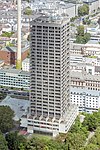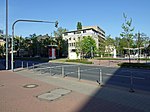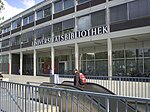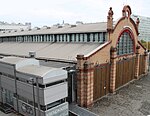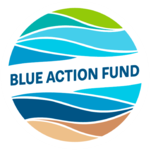One Forty West
2020 establishments in Germany21st-century architecture in GermanyBuildings and structures completed in 2020Buildings and structures in FrankfurtHotel buildings completed in 2020 ... and 6 more
Hotels established in 2020Hotels in FrankfurtModernist architecture in GermanyResidential skyscrapers in GermanySkyscraper hotelsSkyscrapers in Frankfurt
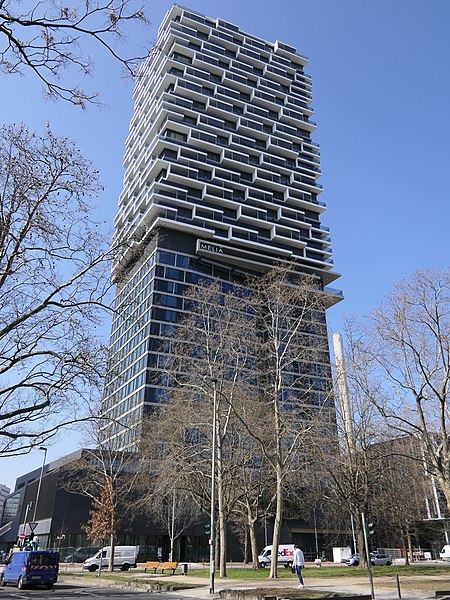
One Forty West is a mixed-use high-rise building in the Westend-Süd district of Frankfurt, Germany. Built between 2017 and 2020, the tower stands at 145 m (476 ft) tall and is the current 22nd tallest building in Frankfurt.
Excerpt from the Wikipedia article One Forty West (License: CC BY-SA 3.0, Authors, Images).One Forty West
Senckenberganlage, Frankfurt Westend Süd (Innenstadt 2)
Geographical coordinates (GPS) Address External links Nearby Places Show on map
Geographical coordinates (GPS)
| Latitude | Longitude |
|---|---|
| N 50.11597 ° | E 8.6515 ° |
Address
One Forty West (OneFortyWest)
Senckenberganlage 13-15
60325 Frankfurt, Westend Süd (Innenstadt 2)
Hesse, Germany
Open on Google Maps
